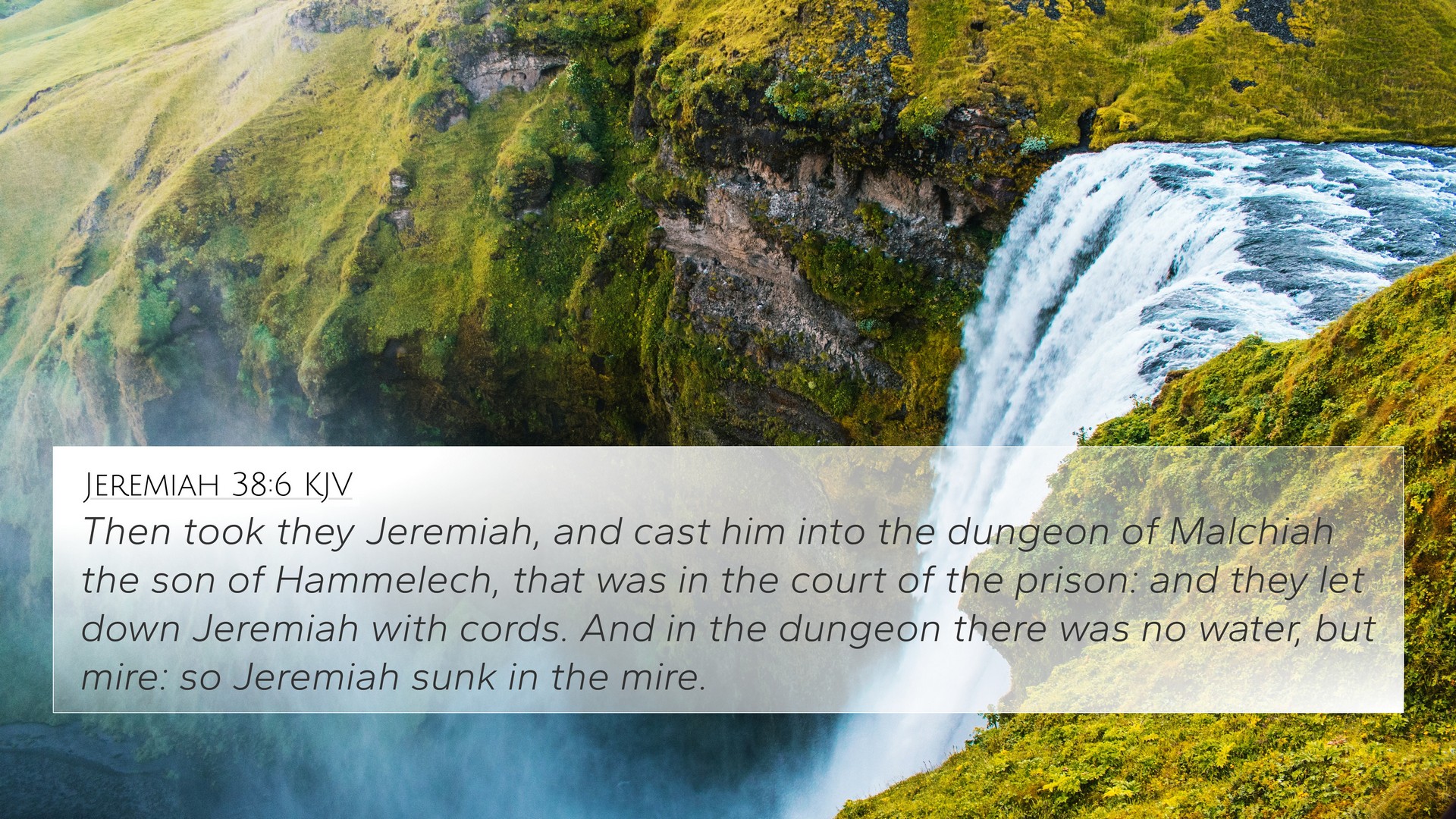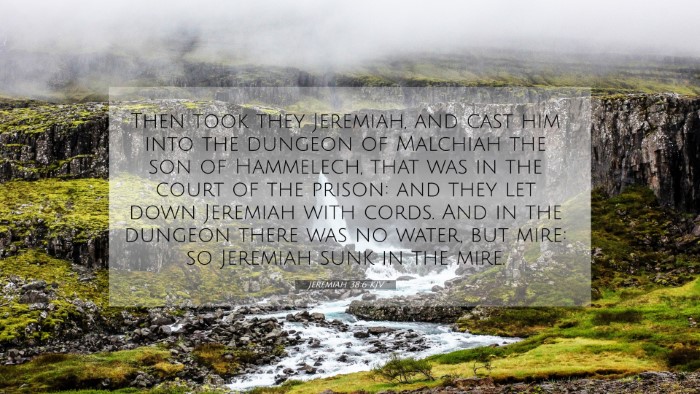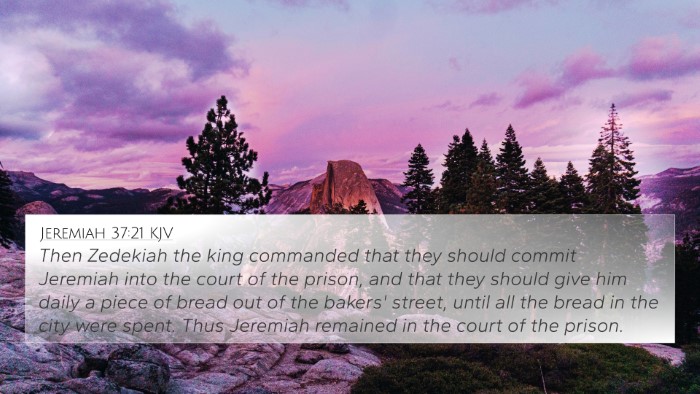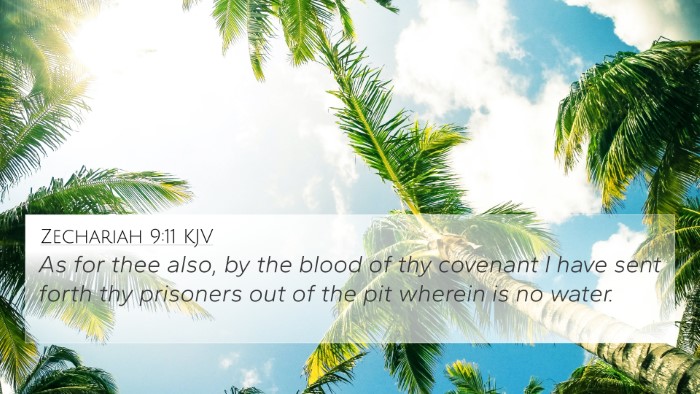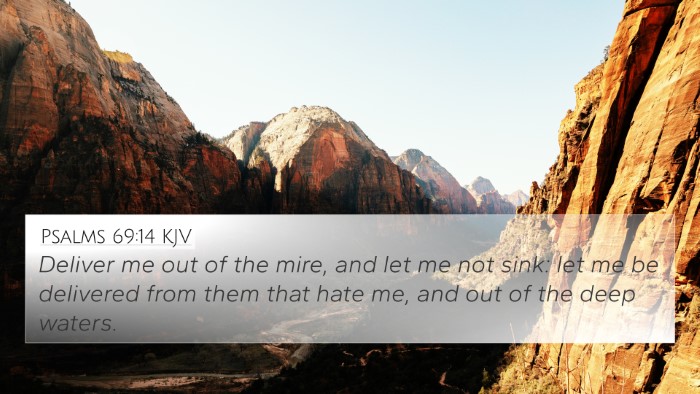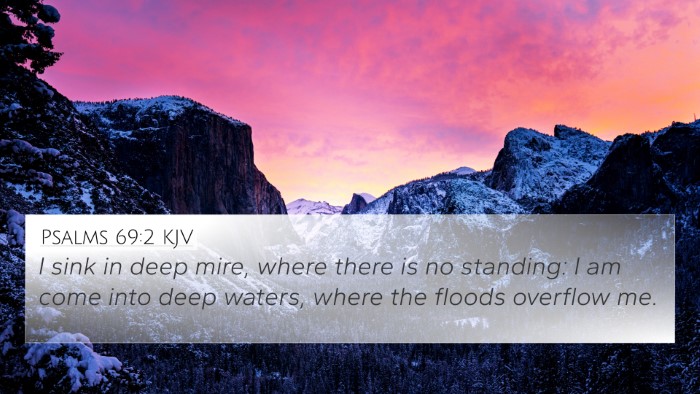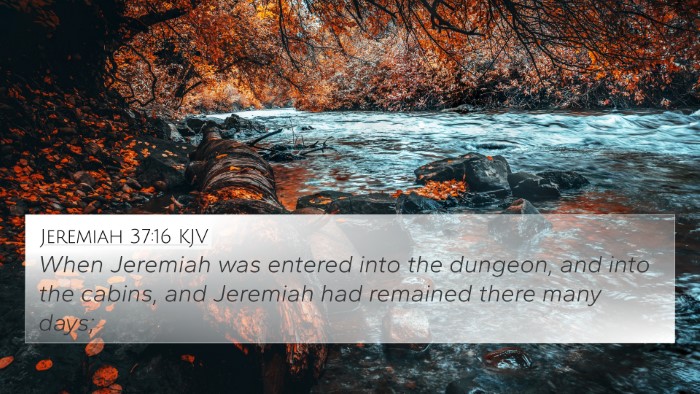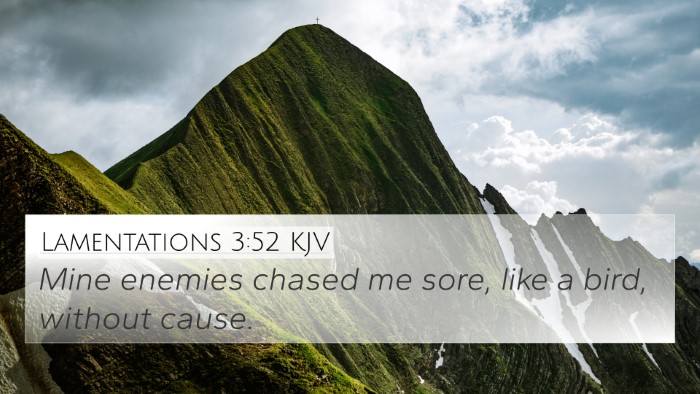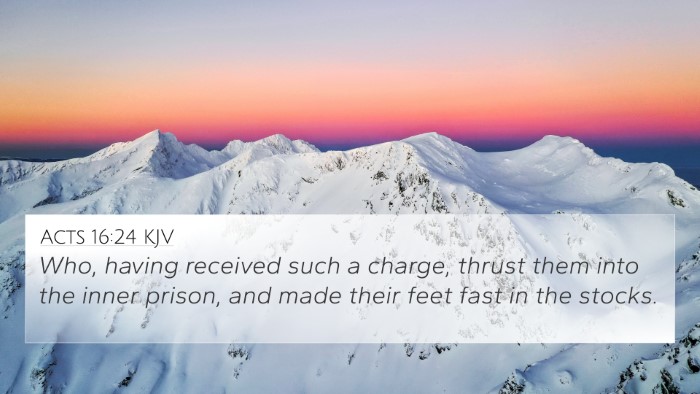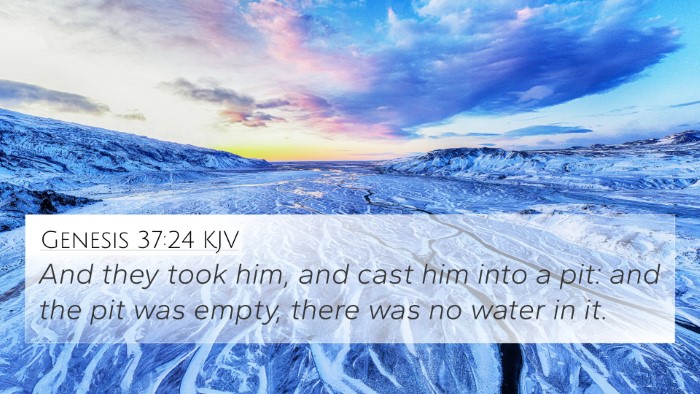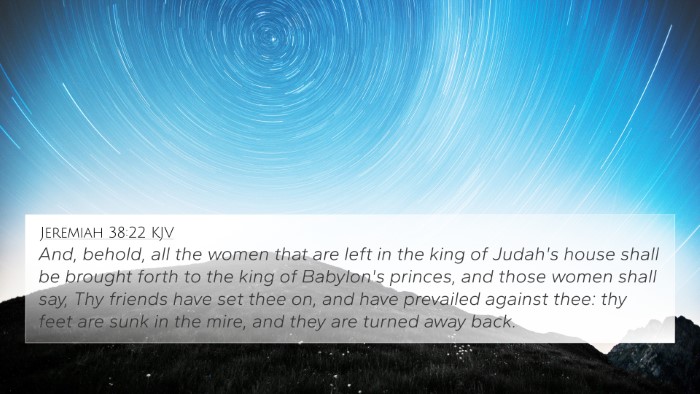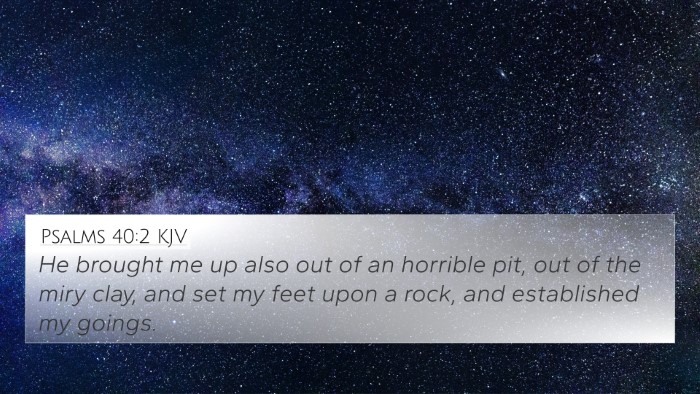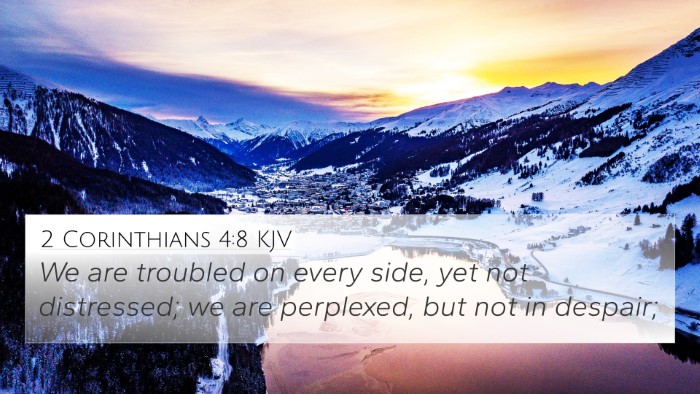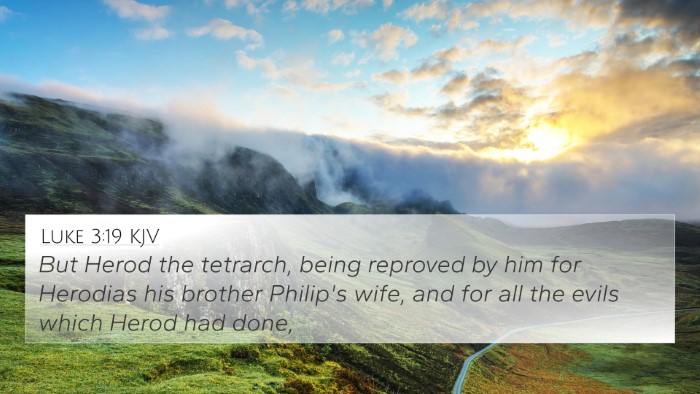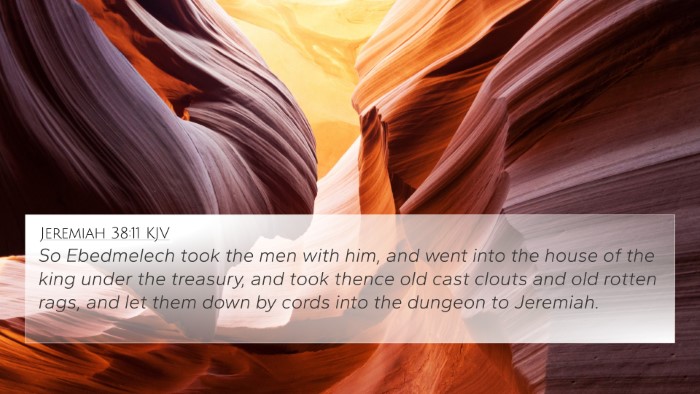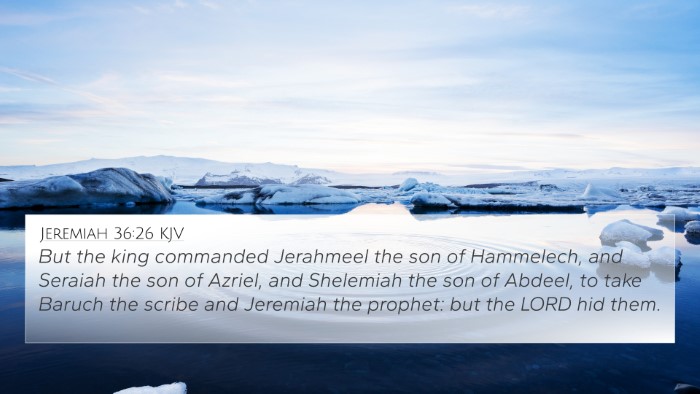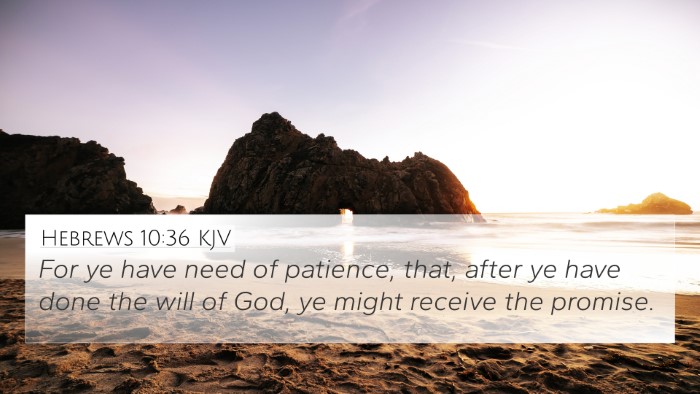Understanding Jeremiah 38:6: A Deep Dive into Biblical Meaning
Jeremiah 38:6 states:
"So they took Jeremiah and cast him into the dungeon of Malchiah the son of Hammelech, that was in the court of the prison: and they let down Jeremiah with cords. And in the dungeon there was no water, but mire: so Jeremiah sunk in the mire."
This passage takes place during a tumultuous time in Judah, where the prophet Jeremiah faces hostility for delivering God’s message, particularly regarding the impending Babylonian captivity. To fully comprehend this scripture, we can explore insights from various public domain commentaries, including those by Matthew Henry, Albert Barnes, and Adam Clarke.
Contextual Background
Jeremiah, often referred to as the "weeping prophet," endured profound hardships as he conveyed God's warnings to the people of Judah. His ministry focused on calling the nation to repentance and preparing them for the consequences of their actions. The circumstances surrounding Jeremiah 38:6 illustrate the intense opposition he faced.
Commentary Insights
Matthew Henry’s Commentary
Matthew Henry reflects on the cruelty and injustice faced by Jeremiah. He points out that this dungeon, characterized by its mire, symbolizes the depths of despair into which the prophet was cast due to the people's rejection of God's Word. Henry emphasizes the spiritual significance of this suffering, relating it to the perseverance of God's servants amidst adversity.
Albert Barnes’ Notes
Albert Barnes notes the physical and symbolic implications of being placed in the dungeon. He emphasizes that the cords used to let Jeremiah down signify the constraints that sinful human behaviour places on those who deliver God's message. Barnes highlights that while Jeremiah’s situation appeared desperate, it serves as a reminder of God’s ultimate control over human affairs.
Adam Clarke’s Commentary
Adam Clarke analyzes the historical context, suggesting that the leaders of Judah sought to silence Jeremiah as they were unwilling to accept his prophesies of destruction. Clarke notes that the mire in the dungeon represents the mire of sin in which the people resided, drawing parallels between Jeremiah's physical plight and their spiritual state.
Thematic Cross-references
Jeremiah 38:6 connects with several other biblical passages, emphasizing themes of suffering, resilience, and God’s sovereign plan. Below are twelve related verses that highlight the interconnectedness of scripture:
- Psalm 69:14-15: "Deliver me out of the mire, and let me not sink: let me be delivered from them that hate me, and out of the deep waters." - This psalm resonates with Jeremiah’s own cry for deliverance from despair.
- Lamentations 3:55-57: "I called upon thy name, O LORD, out of the low dungeon. Thou hast heard my voice: hide not thine ear at my breathing, at my cry." - This illustrates the depth of Jeremiah’s anguish and God’s response to the cries of His people.
- Isaiah 51:14: "The captive exile hasteneth that he may be loosed, and that he should not die in the pit." - Reflects the hope of release from captivity.
- 2 Corinthians 4:8-9: "We are troubled on every side, yet not distressed; we are perplexed, but not in despair; persecuted, but not forsaken; cast down, but not destroyed." - The apostle Paul embodies the enduring spirit present in the narrative of Jeremiah.
- Matthew 5:10: "Blessed are they which are persecuted for righteousness' sake: for theirs is the kingdom of heaven." - Highlights the spiritual blessing in suffering for God’s sake.
- Acts 14:22: "Strengthening the souls of the disciples, exhorting them to continue in the faith, and that we must through much tribulation enter into the kingdom of God." - Reinforces the idea of perseverance amidst trials.
- Romans 8:35: "Who shall separate us from the love of Christ? shall tribulation, or distress, or persecution, or famine, or nakedness, or peril, or sword?" - Emphasizes the unwavering connection to God despite suffering.
- Hebrews 11:36-38: "And others had trial of cruel mockings and scourgings, yea, moreover of bonds and imprisonment: They were stoned, they were sawn asunder, were tempted, were slain with the sword: they wandered about in sheepskins and goatskins; being destitute, afflicted, tormented." - Chronicles the fate of the faithful in their witness for God.
- 1 Peter 2:20: "For what glory is it, if, when ye be buffeted for your faults, ye shall take it patiently? but if, when ye do well, and suffer for it, ye take it patiently, this is acceptable with God." - Encourages believers facing unjust suffering.
- James 1:12: "Blessed is the man that endureth temptation: for when he is tried, he shall receive the crown of life, which the Lord hath promised to them that love him." - Connects to the idea of eventual redemption through perseverance.
Implications for Bible Study
Understanding Jeremiah 38:6 invites readers to consider the broader implications of the biblical narrative. This verse and its accompanying commentaries encourage believers to engage in cross-referencing biblical texts to discover deeper insights, thematic connections, and to grasp the holistic message of scripture. Using tools like a bible concordance and a bible cross-reference guide can greatly enhance one’s study.
Conclusion
In conclusion, Jeremiah 38:6 serves as a poignant reminder of the suffering of the righteous and the call to steadfastness in faith. Combined insights from various commentaries reveal the richness of this verse within the context of God’s will and human response. Engaging with bible verse parallels and employing cross-referencing bible study methods can lead to a richer understanding of the connections between the Old and New Testaments.
As believers, navigating these connections can enrich one's faith journey and offer profound insights into the nature of God and His unwavering promise to His people.
